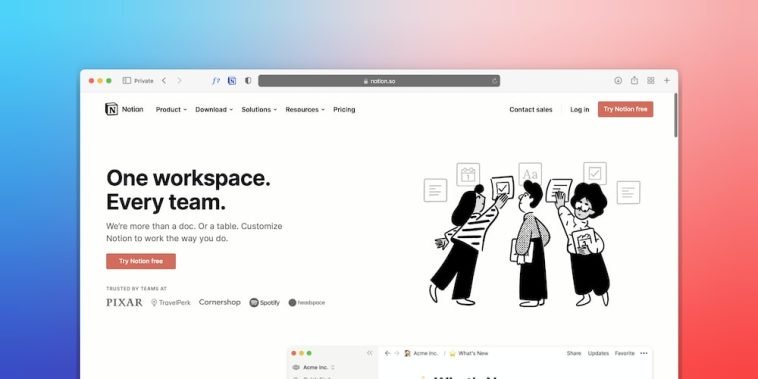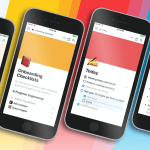Introduction.
YouTube has become a powerhouse platform for sharing and consuming video content, making it a valuable resource for learning, entertainment, and inspiration.
Notion, an all-in-one workspace, offers seamless integration with YouTube, allowing you to incorporate videos directly into your Notion pages and enhance your productivity, organization, and creativity. In this article, we will explore how to add YouTube videos to Notion effortlessly.
Whether you’re a student looking to integrate educational videos into your study materials, a content creator organizing video references, or simply someone who wants to curate a collection of favourite videos, Notion provides a user-friendly solution to embed YouTube videos directly into your workspace.
Hey there, dear reader! We hope you’re enjoying the content on our blog. Did you know we have a treasure trove of other insightful articles waiting for you?
Checkout the links to the article below to become more productive and scale your Notion experience.
- How To Make Money Selling Notion Templates
- How To Make Money Online With Notion
- How To Make Money With Notion Templates
- How To Become a Notion Consultant
- How To Personalize Notion
- How To Use Notion For Social Media Management
- How To Sell Notion Templates On Etsy
- How To Build a Website On Notion
- How To Build Your Portfolio On Notion
- How To Use Notion For Personal Use
- How To Use Notion For Research
How To Add YouTube Video To Notion?
Notion, an all-in-one workspace, provides seamless integration with YouTube, enabling users to embed videos directly into their Notion pages.
This feature opens up a world of possibilities, allowing you to curate and organize video references, create interactive study materials, or enhance your project documentation with dynamic visual content.
In this article, we will explore how to add YouTube videos to Notion effortlessly. Whether you’re a student, professional, or creative individual, incorporating YouTube videos into your Notion workspace can boost productivity, creativity, and knowledge sharing.
Let’s delve into the essential steps and techniques for adding YouTube videos to Notion:
1. Obtain the YouTube Video Link.
To add a YouTube video to Notion, start by obtaining the unique URL of the video you wish to embed.
Open your web browser, navigate to the desired video on YouTube, and copy the link from the address bar at the top of the page. Make sure you have the complete URL to ensure smooth embedding into your Notion page.
2. Embed the YouTube Video in Notion.
Once you have the YouTube video link, open Notion and navigate to the page where you want to add the video.
In Notion, create a new content block or select an existing one. Look for the “Embed” option or a similar feature, depending on your Notion version.
3. Paste the YouTube Video Link.
In the content block, paste the YouTube video link you copied earlier. Notion will automatically recognize the link and generate a preview of the video.
You will see a thumbnail, video title, and other relevant information associated with the YouTube video.
4. Customize the Video Display.
Notion allows you to customize the display of the YouTube video to suit your preferences.
You can resize the video by dragging its edges, changing its alignment within the content block, or adjusting the aspect ratio for a perfect fit. Experiment with different layouts to create visually appealing and engaging Notion pages.
5. Interact with the YouTube Video.
Once the YouTube video is embedded in your Notion page, you can interact with it as you would on the YouTube platform.
Click the play button to start the video, adjust the volume, and utilize YouTube’s playback controls to pause, rewind, or skip forward. Enjoy a seamless viewing experience without leaving your Notion workspace.
6. Share and Collaborate.
One of the advantages of using Notion to add YouTube videos is the ease of sharing and collaborating.
Whether you’re working on a team project, sharing educational resources, or collaborating with clients, everyone can access and view the embedded YouTube videos directly within the Notion page.
This promotes efficient collaboration, eliminates the need to switch between platforms, and keeps all relevant content in one place.
Hey there, dear reader! We hope you’re enjoying the content on our blog. Did you know we have a treasure trove of other insightful articles waiting for you?
Checkout the links to the article below to become more productive and scale your Notion experience.
- How To Make Money Selling Notion Templates
- How To Make Money Online With Notion
- How To Make Money With Notion Templates
- How To Become a Notion Consultant
- How To Personalize Notion
- How To Use Notion For Social Media Management
- How To Sell Notion Templates On Etsy
- How To Build a Website On Notion
- How To Build Your Portfolio On Notion
- How To Use Notion For Personal Use
- How To Use Notion For Research
Conclusion.
By incorporating YouTube videos into your Notion workspace, you can enhance your productivity, knowledge sharing, and creativity.
With Notion’s seamless integration, adding YouTube videos is a breeze, allowing you to curate, organize, and present dynamic visual content within your Notion pages.
Embrace the power of combining Notion and YouTube to create engaging study materials, document projects, or share informative resources.
Elevate your Notion experience and unlock new possibilities by seamlessly integrating YouTube videos into your workflow.
Hey there, dear reader! We hope you’re enjoying the content on our blog. Did you know we have a treasure trove of other insightful articles waiting for you?
Checkout the links to the article below to become more productive and scale your Notion experience.
- How To Make Money Selling Notion Templates
- How To Make Money Online With Notion
- How To Make Money With Notion Templates
- How To Become a Notion Consultant
- How To Personalize Notion
- How To Use Notion For Social Media Management
- How To Sell Notion Templates On Etsy
- How To Build a Website On Notion
- How To Build Your Portfolio On Notion
- How To Use Notion For Personal Use
- How To Use Notion For Research






GIPHY App Key not set. Please check settings